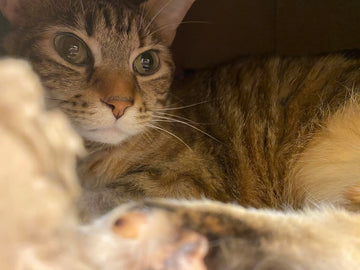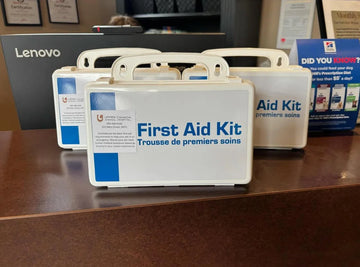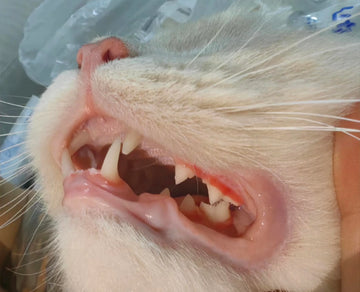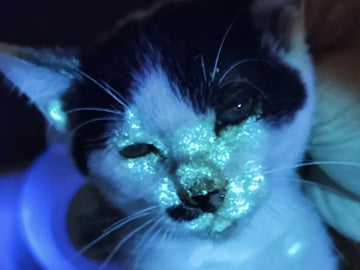If you’ve just heard the words “your cat is FeLV-positive,” your stomach likely dropped. Breathe with me. Feline Leukemia Virus (FeLV) is serious, yes—but it is not an automatic goodbye. With modern testing, smarter home care, vaccines for at-risk cats, and attentive monitoring, many FeLV+ cats live good lives. This guide is a calm, practical roadmap: what FeLV is, how it spreads, how long cats can live, what to expect from vet care, how to protect other cats in the home, and where the real hope lives—not false promises, but informed steps that change outcomes.
What FeLV Is (in plain English)
FeLV is a retrovirus (a virus that inserts its genetic material into host cells) that primarily targets a cat’s immune system and blood-forming tissues. Over time, some infected cats remain outwardly healthy; others develop immunosuppression, chronic infections, anemia, or—less commonly—certain cancers (lymphoma, leukemia). Not every positive test predicts the same path, which is why confirmatory testing and ongoing monitoring matter.
- FeLV affects cats only—people and dogs do not catch FeLV.
- Many FeLV+ cats can live comfortably for years with good care.
- Transmission requires close, prolonged contact (saliva, sharing bowls, mutual grooming); casual across-the-room exposure is low risk.
How FeLV Spreads — Realistic Risk Scenarios
The virus is shed mainly in saliva and nasal secretions, and to lesser degrees in urine, feces, and milk. Typical transmission settings:
- Mutual grooming & shared bowls: the most common route among friendly housemates.
- Bites: fighting can transmit via saliva into tissue.
- Mother to kittens: in utero, during birth, or via nursing.
Low-risk situations: brief sniffing under a door, passing contact at a clinic (with normal cleaning), or sharing air space without saliva exchange.
Testing & Diagnosis — ELISA, IFA, PCR
Most clinics start with a point-of-care ELISA test (a “snap test”) that detects FeLV antigen in blood. If positive, we confirm with:
- IFA (immunofluorescent antibody): detects infected white blood cells; suggests bone marrow involvement.
- PCR: detects viral DNA/RNA; helpful for discordant results or staging.
Because false positives (and less commonly, false negatives) can occur, always confirm a first positive—especially in asymptomatic cats or shelter intakes. Retesting after 60–90 days can clarify regressive vs progressive infection.
| Test | What it detects | When we use it | Meaning |
|---|---|---|---|
| ELISA (antigen) | Free virus in blood | Initial screen | Positive = likely infected; confirm |
| IFA | Virus in WBCs | Confirm/prognosis | Positive = bone marrow involvement |
| PCR | Viral DNA/RNA | Discordant cases | Helps define regressive infection |
Survival & Prognosis — What Today’s Data Show
Prognosis depends on how a cat’s immune system handles the virus. We tend to think in three patterns:
- Regressive infection: the immune system controls the virus; cats may test negative later on certain assays and live for many years.
- Progressive infection: persistent viremia with higher risk for disease; survival is more variable.
- Abortive/discordant: rare; exposure without persistent infection.
With attentive veterinary care, indoor living, good nutrition, and prompt treatment of secondary issues, many FeLV+ cats enjoy multi-year quality life. Your best predictors are: baseline health, frequency of secondary infections, weight stability, and regular lab trends (CBC/chemistry).

Daily Care for FeLV+ Cats — Nutrition, Litter, Stress
Nutrition
- High-quality, complete diet; prioritize protein and moisture (wet food helps hydration).
- Keep weight logs; small losses matter. Use a kitchen scale weekly.
- Consider omega-3s (vet-approved) for inflammation support.
Environment
- Indoor-only lifestyle to reduce pathogen exposure and injuries.
- Low-stress routines: stable feeding times, predictable play, safe hiding spots.
- Strict parasite prevention (fleas, ticks, heartworm where indicated).
Hygiene
- Clean water bowls daily; wash food bowls after each meal.
- Frequent litter scooping; mild unscented cleaners.
- Separate grooming tools for FeLV+ cats if you have multiple cats.
GI flare? If your cat is vomiting or has diarrhea, pause new treats and follow a gentle plan; see our practical Cat Gastroenteritis guide for home triage vs vet-now decisions.
Multi-Cat Households — Separation, Introductions, Vaccines
- FeLV-negative cats: discuss vaccination with your veterinarian if they share space with a positive cat. Vaccines reduce risk but are not 100%.
- Shared resources: transmission risk rises with shared bowls and grooming. Separate food/water stations; consider supervised or divided living.
- New introductions: test and quarantine newcomers. A slow, structured introduction lowers stress (immune-friendly) and transmission risk.
- Litter boxes: provide separate boxes to reduce contact.
Every household is unique; some bonds are worth the extra management, others do better with separate friendly zones or keeping a positive cat as a cherished solo companion.
FeLV Vaccination — Who Needs It and When
FeLV vaccination is considered a “lifestyle” vaccine: highly recommended for kittens, outdoor cats, social cats, and those living with or routinely exposed to FeLV+ cats. Kittens are more susceptible; vaccinating them before exposure is key. Adult indoor-only cats with no exposure risk may not need ongoing boosters—your vet will tailor a plan.
Common Complications — Infections, Anemia, Cancer
Because FeLV can weaken immunity and affect bone marrow, we watch for:
- Chronic infections: skin, respiratory, urinary. Treat early and completely.
- Anemia: pale gums, lethargy, increased sleep; confirmed on CBC.
- Lymphoma/leukemia: less common but possible; weight loss, lymph node enlargement, GI signs.
- Oral disease: drooling, bad breath, reluctance to eat—review our detailed Cat Oral Disease Guide.
- Skin/coat problems: investigate ring-shaped lesions quickly; see Ringworm to prevent household spread.
Your Vet Plan — Visit Schedule, Labs & When to Call
| Timing | What we do | Why it matters |
|---|---|---|
| At diagnosis | Physical, CBC/chemistry, confirmatory IFA/PCR, parasite control plan | Baseline to detect anemia, organ trends; confirm staging |
| Every 6 months | Exam, weight, oral check, CBC (± chem) | Catch infections or anemia early |
| Anytime “off” | Same-week check | FeLV+ cats hide illness—early treatment is leverage |
- Reduced appetite > 24 hours, or rapid weight loss
- Fever (> 102.5°F), lethargy, labored breathing
- Persistent vomiting/diarrhea, blood in stool
- Pale gums, yellowing of eyes/skin, dramatic behavior change
Myths vs Facts — What FeLV Is Not
- Myth: “FeLV is a death sentence.” Fact: Many FeLV+ cats live years with excellent quality of life.
- Myth: “FeLV spreads through the air.” Fact: It requires close contact—mainly saliva exchange.
- Myth: “FeLV infects humans or dogs.” Fact: No—FeLV is feline-specific.
- Myth: “A positive ELISA once means forever progressive disease.” Fact: Some infections regress; confirm and retest per vet guidance.
Printable Care & Prevention Checklist
Print this and keep it on your fridge or inside your cat’s medical folder.
Related Cat-Health Guides
- Cat Gastroenteritis — vomiting/diarrhea triage and home care.
- Ringworm — identify, treat, and disinfect your home.
- Cat’s FIP — a step-by-step parent story for a different, systemic disease.
- Cat Oral Disease Guide — stomatitis, gingivitis, periodontitis.




